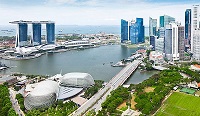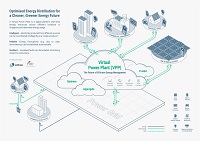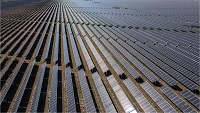For more information, please refer to:
The Energy Market Authority (EMA) has appointed Accenture Pte Ltd (Accenture) to design and implement an Intelligent Energy System (IES) pilot project. The IES pilot will involve around 4,500 customers in various residential, commercial and industrial locations, including the Nanyang Technological University (NTU) campus, the CleanTech Park at Jalan Bahar and the Punggol Eco-Precinct. This is an important step towards a smarter power grid, which will provide consumers with more information, choice and control over their electricity usage, thereby improving energy efficiency for Singapore as a whole.
The IES pilot will be conducted in two phases. Phase 1 (2010-2012) will focus on the implementation of the enabling infrastructure for the IES. The key infrastructure components are the advanced metering infrastructure (commonly referred to as “smart meters”) and the communication system. Smart meters are equipped with communications capabilities, and provide both energy providers and consumers with detailed information on how much electricity is being used and fed into the grid. A good communications network is crucial for such information flows to be handled seamlessly. Hence a key emphasis in this first phase of the pilot will be to establish the smart metering communication protocols and standards. This will be done by leveraging on the Next Generation National Broadband Network and other communication platforms.
Phase 2 (2012-2013) of the pilot will focus on the smart grid applications. Customers with the smart meters installed in their premises will be able to experience the benefits of the IES through various services offered by the electricity retailers. Residential customers will be able to monitor their energy consumption on a real-time basis with convenient in-home display devices. They can also choose from a range of electricity pricing plans, thus allowing them to better manage their consumption and budgets, for example, by shifting their usage from peak to off-peak periods when electricity prices are lowest.
For industrial and commercial customers, the IES also offers several applications to manage their energy needs. For example, improved energy management systems riding on the smart meters will provide timely access of information for businesses to optimize and reduce their electricity consumption. Building owners can also install automation systems that include special programmable thermostats and other devices to monitor and control the building’s air-conditioning, lighting and mechanical systems.
Besides offering direct benefits to customers, the IES pilot will help to strengthen the power system capabilities and network efficiency in Singapore. Singapore Power’s subsidiaries, SP PowerGrid and SP Services, are therefore key partners with EMA on the project. With information from the smart meters, the national power grid operator, SP PowerGrid, will be able to detect almost instantly the location and extent of any localized outages, and respond promptly to restore supply. Furthermore, with better information and control systems, it will be easier to integrate distributed and intermittent energy sources, such as solar photovoltaic panels and small co-generation plants, into the grid. This also caters to the future possibility of electric vehicles connecting to the grid, both to draw electricity from the grid and also to supply electricity to the grid during periods of peak demand.
The potential benefits of the smart grid, which we hope to realise through the IES pilot project, are summarised below:
| Group | Potential Benefits |
|---|---|
| Households |
|
| Businesses (i.e. Commercial and Industrial Consumers) |
|
| Grid Owner and Operator (Singapore Power) |
|
The total budget for the IES pilot project is $30 million, funded by the Government and Singapore Power. Accenture has been appointed for Phase 1 of the IES pilot project and it will be working with its selected partners including ST Electronics (Info-Comm Systems), Oracle, Hewlett Packard, Power Automation, Control4 and Greenwave, in designing and implementing this phase of the project. In Phase 2 of the pilot, other companies may be brought in to provide smart grid applications and services.
Mr Lawrence Wong, Chief Executive of EMA said, “Advances in smart grid technologies are evolving rapidly worldwide. They offer tremendous potential to enhance energy efficiency and improve the reliability of electricity supply. This IES pilot project will allow us to deploy and test out promising smart grid applications in selected areas, before rolling them out on a wider scale. All this will support Singapore’s efforts in developing a smart energy economy.”
Mr Ong Boon Hwee, Chief Operating Officer of Singapore Power Ltd added, “We are excited by the potential for smart grid technologies. Singapore Power will commit resources to co-fund and implement the pilot project. We look forward to harnessing the benefits of new technologies and applications to enhance the capabilities of Singapore’s power grid.”
The IES pilot project and the latest trends in smart grid technologies will be showcased at the upcoming Singapore International Energy Week (SIEW) 2010, to be held from 27 October to 4 November 2010, together with other innovative energy solutions. Building on the theme “Fuelling the Smart Energy Economy”, SIEW 2010 will bring together more than 10,000 energy professionals and policy makers to exchange ideas and best practices in shaping our energy future.
Mr Paul Gosling, Managing Director, Utilities industry group, Accenture said, “Energy efficiency, reliability and greater consumer participation in energy consumption and conservation are just some benefits of a smart grid. The IES pilot will bring exciting innovations to the Singapore power system and Accenture, and our teaming partners, are delighted to be chosen by the EMA to implement this showcase project.”
Refer to the Annex of the attachment for a graphical representation of the smart grid technologies to be developed for the IES pilot project.















